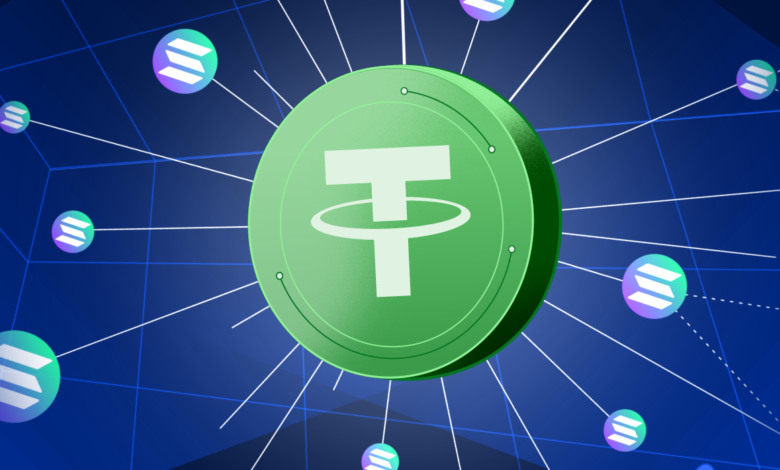Solana USDT: The Future of Stablecoin Trading on Solana Network

Introduction
In the fast-moving world of cryptocurrency, the race toward faster, cheaper, and more efficient blockchain transactions has become a defining challenge. While Bitcoin laid the foundation and Ethereum introduced smart contracts, Solana has emerged as one of the most technically advanced blockchains focused on scalability and speed. Among the many tokens and assets on Solana, Solana USDT has quickly gained popularity as a stable, reliable, and high-performance way to trade and store value.
Stablecoins, like USDT (Tether), act as a bridge between traditional fiat currencies and the volatile world of crypto assets. But the combination of Solana’s fast infrastructure with the stability of USDT has created something powerful — a tool that enables near-instant, low-cost transactions across global markets.
This article explores the history, benefits, challenges, and future of Solana USDT, analyzing why it might represent the next big leap in blockchain-based financial systems.
1. What Is Solana and Why Does It Matter?
Solana is a high-performance blockchain platform launched in 2020, designed to process thousands of transactions per second (TPS) while maintaining low fees and security. It uses a unique consensus mechanism called Proof of History (PoH) combined with Proof of Stake (PoS) to achieve high throughput without sacrificing decentralization.
The Solana network boasts a transaction speed of over 65,000 TPS, with an average transaction fee of less than $0.001. This makes it one of the fastest and cheapest blockchains in existence, a crucial advantage when dealing with stablecoins that rely on speed and predictability for use in trading and payments.
2. The Role of USDT in the Crypto Ecosystem
Tether (USDT) is the world’s first and most widely used stablecoin, pegged 1:1 to the US dollar. It allows traders and investors to move money within crypto exchanges without being affected by volatility.
Before stablecoins like USDT, crypto traders often had to convert assets back to fiat, which took time and incurred banking fees. USDT revolutionized this by creating a digital equivalent of the dollar that could move as fast as any cryptocurrency.
However, USDT’s performance depends heavily on the blockchain it operates on. Early versions of Tether existed on Bitcoin’s Omni Layer and Ethereum’s ERC-20 network, but these older systems often suffered from congestion and high gas fees. This led to the rise of Solana USDT, which provided a solution to these long-standing issues.
3. What Makes Solana USDT Different?
Solana USDT is USDT issued on the Solana blockchain. The core benefit of this version lies in Solana’s architecture, which enables high-speed transactions at a fraction of the cost of Ethereum-based transfers.
Here’s what sets it apart:
- Speed: Transactions on Solana finalize in less than a second.
- Low Fees: The average transaction cost is around $0.00025, making microtransactions feasible.
- Scalability: Solana can handle thousands of users and dApps simultaneously without network congestion.
- Compatibility: Developers can easily integrate Solana USDT into DeFi platforms, NFT marketplaces, and exchanges.
These features make it the preferred choice for users who need stable value transfers across DeFi protocols, exchanges, and even real-world payment applications.
4. The Rise of DeFi and the Importance of Stable Liquidity
Decentralized finance (DeFi) has exploded since 2020, offering services such as lending, staking, yield farming, and decentralized exchanges (DEXs). In all of these systems, stablecoins play a critical role as liquidity anchors.
When users provide liquidity or take loans, they often rely on stablecoins like USDT to avoid the risk of losing value due to volatility. With Solana USDT, these DeFi platforms benefit from faster transaction times, reduced slippage, and lower operational costs — all essential features for building scalable decentralized economies.
5. The Technology Behind Solana’s Speed
Solana’s Proof of History (PoH) mechanism is its secret weapon. It timestamps every transaction with a cryptographic proof that ensures the exact order of events. This enables validators to process data in parallel, drastically improving throughput.
When you send or receive Solana USDT, the transaction doesn’t have to wait in a queue like on Ethereum. Instead, Solana’s network confirms it almost instantly. This technology is what allows the blockchain to remain efficient even during times of high activity — a vital factor for exchanges and DeFi platforms dealing with millions of USDT transactions daily.
6. How to Use Solana USDT
Using Solana USDT is straightforward. It can be stored in any Solana-compatible wallet such as:
- Phantom Wallet
- Solflare
- Slope
- Ledger (hardware wallet)
You can also trade Solana USDT on major centralized exchanges (CEXs) like Binance, OKX, or Bitfinex, as well as decentralized platforms such as Serum or Raydium.
For developers, the Solana SPL (Solana Program Library) makes it simple to integrate USDT into decentralized applications, whether for payments, gaming, or DeFi protocols.
7. Benefits for Traders and Investors
- Lower Costs – Ethereum gas fees can often exceed $10 per transaction, while Solana’s fees remain below one cent.
- Faster Settlement – This enables high-frequency trading and near-instant arbitrage opportunities.
- Cross-Platform Compatibility – Solana’s expanding ecosystem ensures that Solana USDT can move seamlessly between apps and services.
- Stable Value – Pegged to the US dollar, it provides traders with a safe asset to park funds during market volatility.
8. Risks and Challenges
No blockchain is perfect, and Solana has faced several network outages in the past due to overwhelming transaction volumes or validator issues. While the team has improved network stability, it remains a risk factor.
Additionally, Tether (the company behind USDT) has faced scrutiny over its reserves and regulatory compliance. Users must understand these risks when holding Solana USDT, as both Solana’s network performance and Tether’s financial practices affect its reliability.
9. The Future of Solana USDT in Global Finance
As stablecoins become more mainstream, governments and institutions are starting to explore digital currencies and blockchain-based payment systems. Solana’s infrastructure could position Solana USDT as one of the fastest, most scalable solutions for large-scale payment systems and cross-border settlements.
In the near future, we could see Solana-based stablecoins integrated into merchant payment platforms, remittance systems, and decentralized banks. The combination of speed, low fees, and dollar stability is exactly what’s needed to bring blockchain finance into everyday use.
10. Real-World Use Cases
- Remittances: Migrant workers can send money home instantly using Solana USDT without paying high transfer fees.
- E-Commerce Payments: Merchants can accept stablecoins without worrying about crypto price fluctuations.
- Gaming & Metaverse: Developers can use Solana USDT as an in-game currency that’s both stable and fast.
- DeFi Collateral: Borrowers can use it to secure loans or provide liquidity on DEXs.
Conclusion
Solana USDT represents more than just another stablecoin on another blockchain — it’s a gateway to faster, more affordable, and more inclusive digital finance. Solana’s high-performance architecture has solved many of the scaling issues that plagued earlier blockchains, allowing USDT to function as it was meant to: a truly stable, accessible digital dollar.
As decentralized applications evolve and adoption widens, Solana USDT could become a key driver of the next wave of blockchain-based innovation. It combines the trust of a global stablecoin with the technology of one of the fastest networks on earth — a perfect match for the future of financial transactions.





